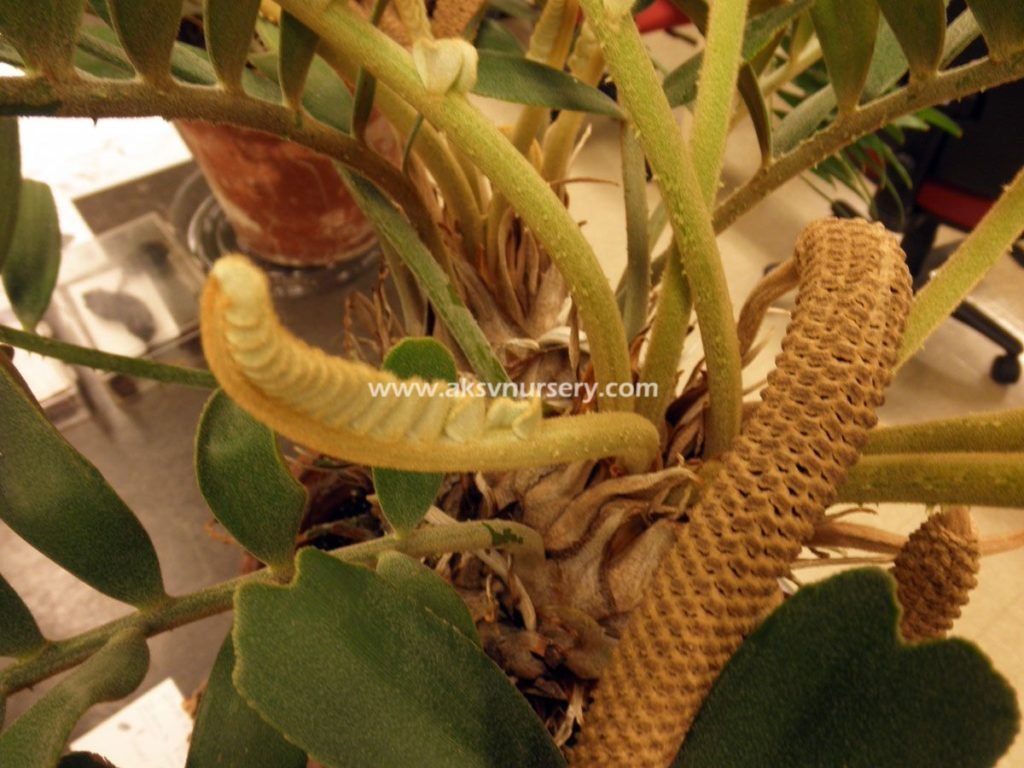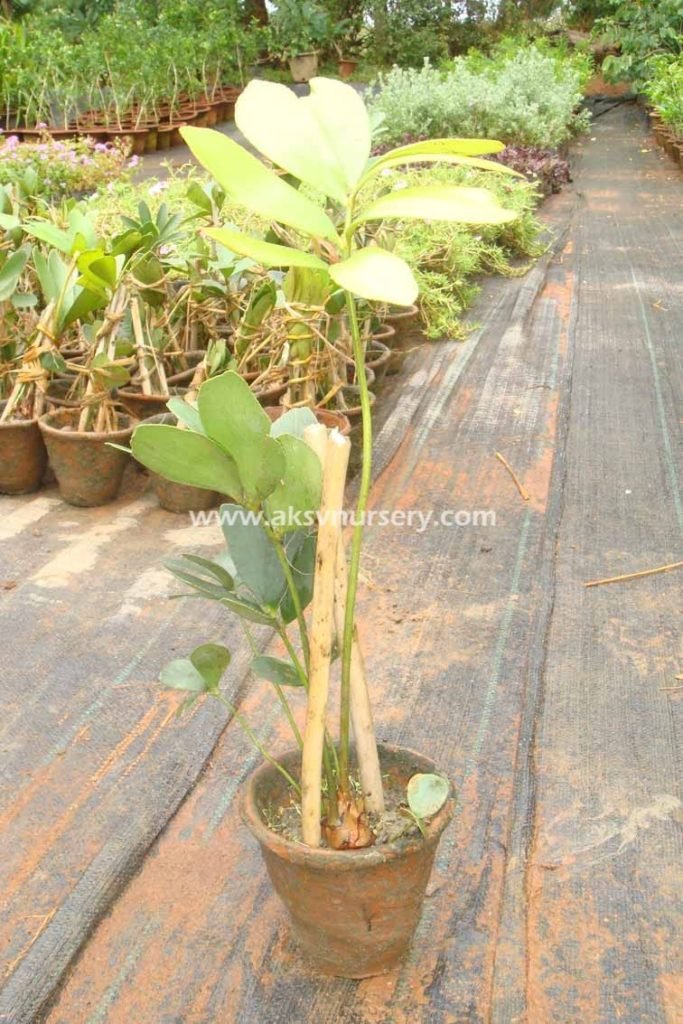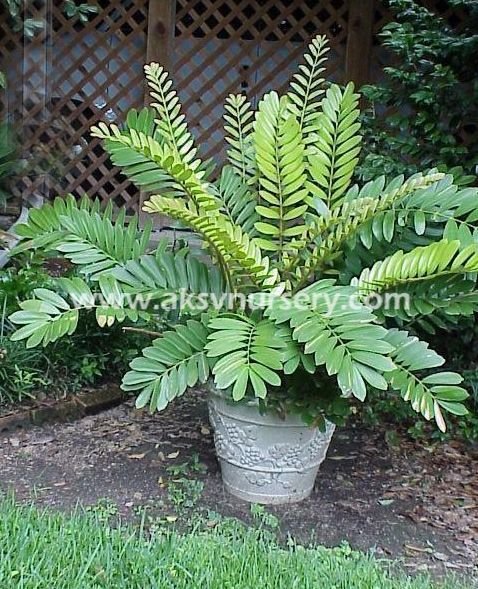Zamia furfuracea
Family: Zamiaceae / Cycadaceae
Cycad, Cardboard Palm
Origin: Southeastern Veracruz, Mexico
This is a “living fossil” plant, surviving on earth since the time of the dinosaurs. Cardboard Palm belongs to the Cycad family (cycad is greek for “palm” which many cycads resemble). Other cycads include Coontie Palm and Sago Palm (neither of these are really palms!) Cardboard Palm has 3 to 4 foot leaves that emerge from a central point forming a rosette. When grown in bright sunlight the rosette becomes a 3 foot high clump of tightly overlapping leaves that will slowly grow to 6 feet in diameter. The thick leathery leaves are pinnate and have 5 inch long by 1 inch wide oval leaflets. They are slightly fuzzy and feel a little like cardboard when rubbed (hence the name Cardboard Palm!) The foliage emerges from a thick fleshy trunk that serves as a water reservoir in times of drought. Male and female reproductive structures (cones) form on separate plants. Even very young plants produce these interestingly shaped cones. When ripe, the female cone breaks to reveal an array of tightly packed, bright red 1 inch seeds. Location Cardboard Palm is native to the warm sandy coastal plains of Mexico and is a common landscape item in tropical and sub-tropical areas all over the world. It is also a popular and easy to grow houseplant. Plant in neutral, well-drained sandy soil. Mulch with organic materials (bark or leaf mold). Sustains leaf damage at 28 degrees F. Cardboard palm makes a great accent or specimen plant. Use near the patio, in mixed foundation plantings or in perennial beds. This cycad is salt resistant and can be used in beachside plantings. Also makes a great container plant for the patio or deck. It is a great houseplant tough enough to survive occasional neglect and harsh indoor environments. Large outdoor clumps are striking as the light olive green new growth emerges to hover above a base of darker mature leaves. Specimens can be grown indoors in shallow containers. Used this way, the partially exposed tuberous stem and the airy crown of leaves create a striking bonsai specimen. With it beautiful shape, exotic looking cones and instinct for survival, Cardboard Palm is one of the favorite indoor plants.










